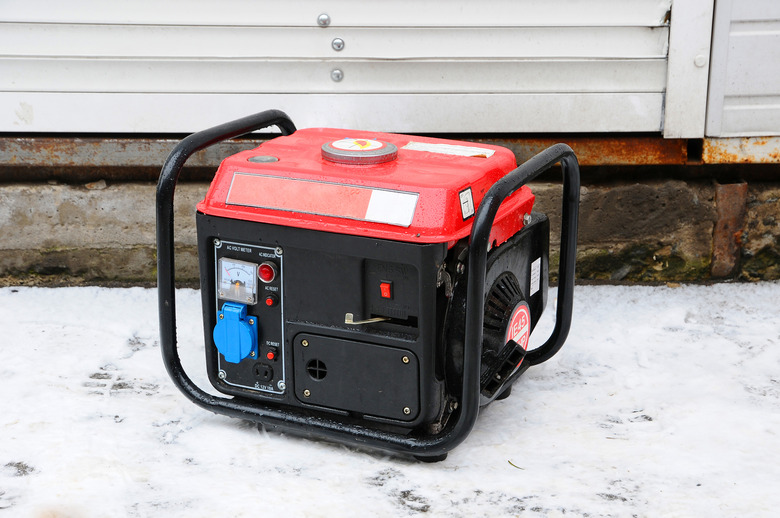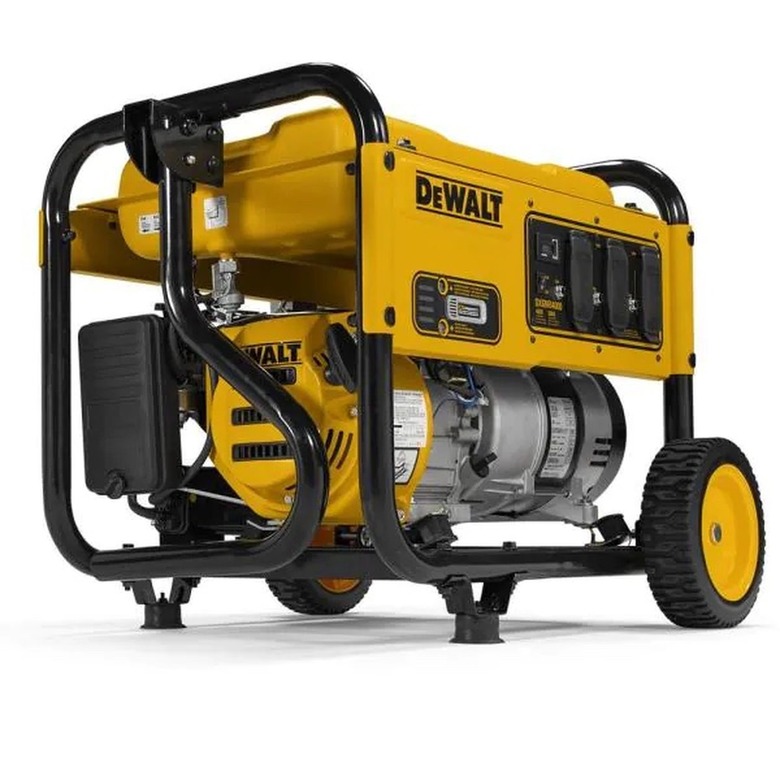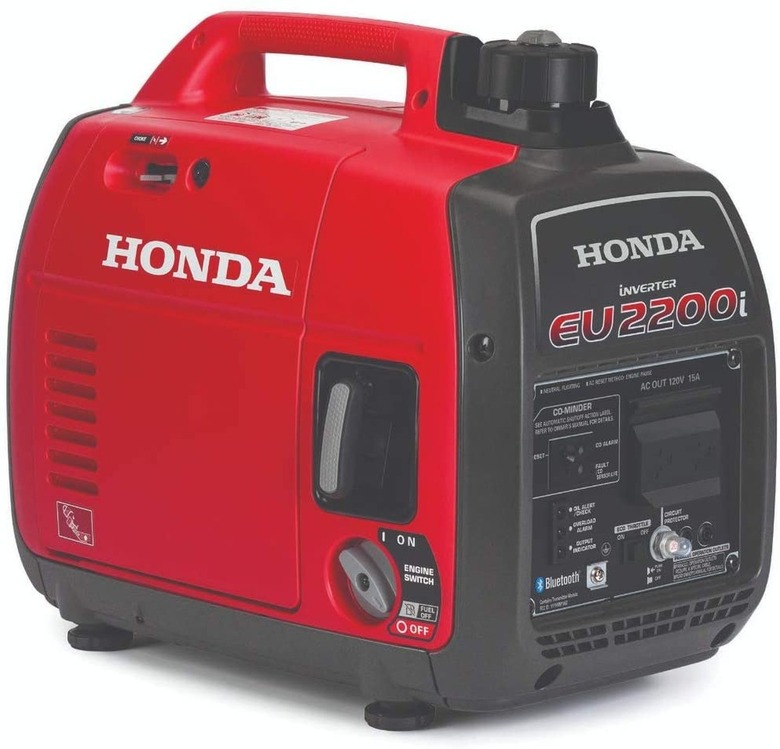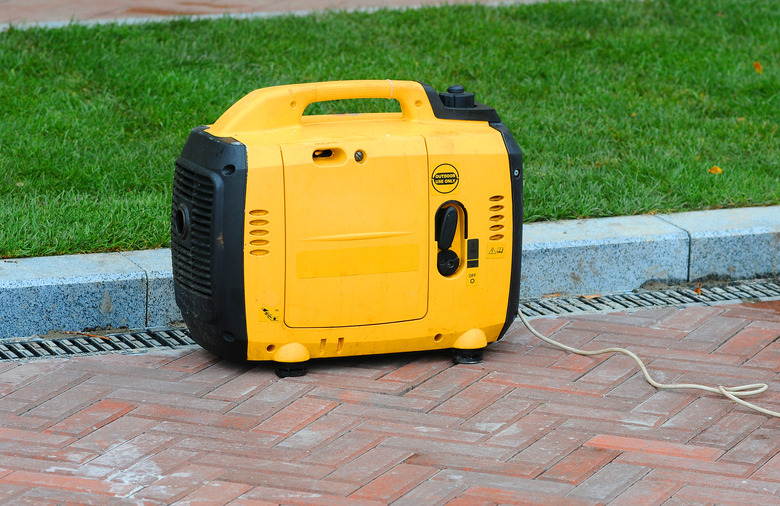A Fail-Proof Guide To Picking And Using A Portable Generator For Backup Power
As the likelihood of an extended power outage grows due to increased weather events caused by climate change, the need for a portable generator to supply emergency electricity is greater than it has ever been. The cause of the outage may be a hurricane, an unexpected snowstorm or an overload of the power grid on a hot day when everyone is running their air conditioner.
Homeowners have two options when it comes to backup generators. They can choose a whole-house generator that is wired into the main electrical panel, or they can choose a smaller portable generator with enough power output to run just the things they need. The latter is the less expensive option, and choosing it doesn't necessarily mean powering everything with extension cords — it's possible to have an electrician install a subpanel with a transfer switch to tie in the generator with the house circuitry.
When a generator is used infrequently for temporary power, a portable one is usually the more practical choice — but it can be hard to know where to begin when you're starting to shop. Here's all of the specs you need to think about before purchasing a portable generator so that you can stay safe when the storm hits or the power goes out.
Sizing a Portable Generator
The most important thing to think about before you purchase a generator is the size, which is not actually the physical size but the amount of kilowatts (aka power) it provides. Industrial generators can have outputs as high as 150 kW, but residential standby generators don't have to be nearly as big and top out in the range of 15 to 20 kW, and a portable generator typically has a wattage in the range of 2 to 10 kW (2,000 to 10,000 watts).
When sizing a generator for your emergency needs, you'll want it to be as small as possible to conserve fuel (portable generators generally run on gasoline) but large enough to run everything you need. It's better to slightly oversize the generator to provide flexibility in case you need extra power, so as a rule of thumb, you should choose one with an output that is 10 to 20 percent more than you think you need.
You determine the amount of power you need by going through your house and reading the label of every appliance you think you'll need in an emergency. The list would typically include the refrigerator, freezer, microwave, television, and computer. If you get your water from a well, the well pump and jet pump that pressurizes the system should also be on your list so you don't run out of water during the blackout. The label on each appliance displays the power consumption in watts, so you simply add the wattages together, but there's one more step that's very important.
Appliances that cycle on and off, such as a refrigerator, freezer or air conditioner, draw extra power when they start up, and if your generator is running near capacity, it can be damaged by this extra power draw. To prevent this, multiply the wattages you totaled by 1.5. For example, if you want to run a refrigerator and microwave both rated for 1,200 watts along with a 300-watt television and a 1,500-watt air conditioning unit, your generator needs to supply at least 6,000 watts. You don't need that amount of power all the time because the appliances will only be using about 4,000 watts when they are all running at the same time, but extra power has to be available for the refrigerator and air conditioner compressors to cycle on.
The Quietest Portable Generator
Noise is one of the biggest problems associated with portable generators, but fortunately, there's a solution, and that's to purchase an inverter generator, such as the Honda 663520 iTAG, often deemed the quietest generator on the market. Many inverter generators are small (the output of the Honda model is only 2,200 watts) and are intended for tailgating and camping, but some are large enough to provide emergency backup. For example, the DuroMax XP9000iH supplies 9,000 watts, which is enough to power an entire house.
Besides being quieter, inverter generators supply cleaner AC (alternating current) power, making an inverter generator the best generator for operating sensitive electronic equipment. Moreover, unlike that of a conventional generator, the turbine of an inverter generator doesn't have to run at a fixed speed and can slow down when the power draw is light. That's one reason it runs quieter, and this feature also allows the generator to consume less fuel.
Using a Generator With Extension Cords
All gas-powered generators, even the quietest inverter generators, produce toxic carbon monoxide, which means you should never run a generator indoors. While it's running, the generator must be outside at least 10 feet away from any occupied space with the engine side of the machine facing away from the house. It can be protected from rain by a roof or overhang, but it should never be fully enclosed inside a structure or covered with a tarp. But because your generator will be far away from your house, extension cords are a necessity.
Some generators can supply both 120-volt and 240-volt power (120-volt power is used for everyday items like a phone charger, whereas 240-volt power is generally used for larger appliances like a washing machine or an oven). For 240-volt power, however, you'll need a cord with a twist-lock plug to connect to the 240-volt receptacle from the generator.
You should also ensure the wire gauge (or cord thickness) of any extension cord will work for the power being drawn from the generator. You can calculate this by dividing the power draw in watts by the voltage in volts and by the length of the cord. For example, a 1,500-watt air conditioner operating at 120 volts draws 12.5 amps. If the cord is less than 50 feet long, it can be 14 gauge, but if the cord is longer, it must be 12 gauge or larger to prevent the voltage drop from affecting the performance of the air conditioner.
Unsure of which extension cord to use? Use this chart to size it correctly:
Extension Cord Size Chart
|
Wire gauge (AWG) |
Load (amps) |
Length (feet) |
|
16 |
10 |
0 – 100 |
|
14 |
10 – 15 |
0 – 50 |
|
12 |
10 – 15 |
50 – 100 |
The generator is outdoors, so the extension cords you plug into it should also be rated for outdoor use. These cords typically have orange, green or yellow sheathing, and the plugs are sealed to keep out moisture. You can run a single cord inside the house and use an adapter to plug in more than one appliance but be sure to add up the current draws to ensure they are below the capacity of the generator and the primary extension cord. It's useful to store a relatively short (25-foot) 12-gauge extension cord with the generator to use as the primary cord.
Connecting a Portable Generator to the Panel
If you want the generator to run hardwired appliances, such as a well pump or sump pump, you can connect it directly to the electrical panel, although this is a job for an electrician and could cost between $500 and $700. The electrician will install a subpanel with a transfer switch, and that panel can be connected to one or more circuit breakers in the panel or to the entire panel depending on the size of the generator. The transfer switch is required by law; it disconnects the panel from the grid while the generator is running, preventing live current from injuring people who are working on the lines — perhaps miles away — to restore power.
A panel hookup is more convenient for homeowners who experience frequent outages, such as those living in northern California during fire season, and it can be tailored to the needs of the household. The homeowner decides which appliances need backup power, and the electrician transfers the breakers for the circuits to the subpanel. The transfer switch can be manual, but it's safer if it automatically disengages from the main panel when the generator starts and supplies power only to the breakers in the subpanel. The generator can be permanently connected to the subpanel, but the panel can also have an extension cord so the generator can be moved out of the way when it isn't being used.
Desirable Portable Generator Features
When shopping for a backup generator, size is far from the only consideration, and some generators have features and capabilities that others don't have. Some of the ones you'll most want to consider are:
- Runtime: Gas-powered generators come with different-size gas tanks, and the larger the tank, the less frequently the generator needs refueling. A runtime of eight hours is typical, but it can vary from four to 16 hours or more. If you need backup power for an extended period, choose one with a longer runtime or choose a dual-fuel model that can switch between gasoline and propane at the flip of a switch.
- Noise level: There is no industry standard for noise level, which is typically measured at a distance of 23 feet from the machine, and it can vary widely from model to model. For example, the noise level of a smaller 2kW machine can vary from 50 to 95 dbA, while a 10kW generator noise level can vary from 69 to 85 dbA. Noise level isn't always listed by the manufacturer, but you can usually find reviews that give you an idea of a particular machine's noise level. Choose the quietest machine possible for the most comfort and least amount of distraction for both you and your neighbors.
- Total harmonic distortion (THD): The THD of a generator is important if you are running sensitive electronic equipment. Keep in mind that control panels for washers and other appliances contain electronic circuit boards. The lower the THD, the better. Inverter generators have the lowest THD, usually between 3 and 5 percent.
- Weight: Larger generators tend to be heavier, with some weighing 200 pounds or more, while smaller generators with a 4kW output weigh only 50 pounds. If you need a heavy generator, make sure it has wheels, especially if you have to move it around frequently.
- Security features: Most gas-powered generators have four-stroke engines, which means that you add oil separately from the gas, and a model with a safety feature that illuminates an LED or shuts off the engine when the oil is low is preferable to one without this feature. Another important feature is a circuit breaker that cuts off the power in the event of an overload, which prevents damage to the engine.
- Electric start: To pull a starting cord, it takes strength that some people may not have, and the generator is unusable if the starter recoil spring fails or if the cord breaks, which could be a disaster if it happens at a critical time. Avoid these problems by purchasing a generator with an electric starter.
References
- Consumer Reports: How to Choose the Right Size Generator
- Worldwide Power Products: Generator Sizing Guide
- Electric Generators Direct: What is an Inverter Generator?
- Ask the Builder: Extension Cords Size Chart
- Generator Bible: An Extensive Guide to Choosing the Perfect Portable Generator
- Time: The Texas Power Grid Failure Is a Climate Change Cautionary Tale



